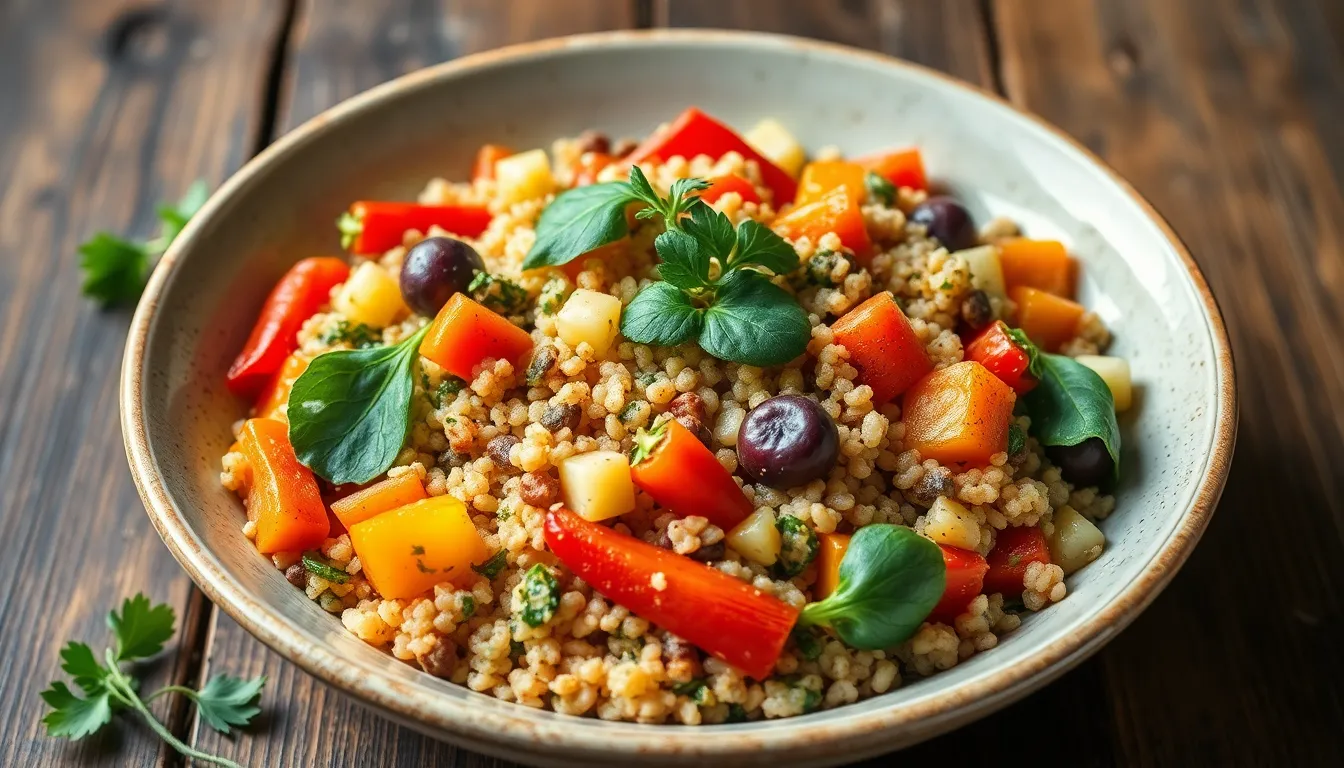Table of Contents
ToggleIf you’ve ever found yourself staring at a mysterious food label, wondering if you’re about to indulge in a creamy delight or risk an unexpected dairy disaster, you’re not alone. Felmusgano, the culinary enigma that’s been making waves, raises that very question: does it contain milk? For lactose-intolerant adventurers and dairy aficionados alike, this is a quest worth embarking on.
Understanding Felmusgano
Felmusgano is a unique food item that originates from specific regions known for their diverse culinary traditions. This dish often includes a variety of ingredients, prompting questions about its composition. Ingredients such as grains, vegetables, meats, and spices typically appear on the label, vastly enriching its flavor profile.
Milk’s inclusion in Felmusgano varies by recipe. Some versions are dairy-free, catering to lactose-intolerant consumers. In contrast, others may incorporate dairy components for creaminess. Analyzing ingredient labels helps determine whether specific Felmusgano products contain milk.
Various manufacturers produce Felmusgano, so formulations differ significantly. Expert recommendations suggest checking labels carefully, especially for individuals with dietary restrictions. Not all products align with stringent dietary guidelines, which might include allergens such as milk.
Specifically, look for terms like whey, casein, or lactose when assessing milk’s presence. These ingredients indicate dairy’s inclusion in Felmusgano. In contrast, products labeled as vegan typically exclude dairy altogether, ensuring safety for those with lactose sensitivities.
Conversations surrounding Felmusgano often highlight its adaptability, celebrating its ability to satisfy diverse palates. The culinary landscape surrounding this dish continues to evolve, driven by consumer preferences. Understanding these aspects allows individuals to make informed choices while enjoying Felmusgano.
The Composition of Felmusgano

Felmusgano features a diverse blend of ingredients, leading to variations in its composition across recipes. Common components include grains like rice or quinoa, vegetables such as spinach or bell peppers, and proteins including meats or legumes. Some recipes incorporate dairy, while others remain dairy-free. This variability enhances its appeal to a broader audience, accommodating different dietary needs.
Ingredients Breakdown
Each recipe of Felmusgano may contain distinct ingredients tailored to regional tastes. Staples like grains provide a foundation, while freshness from vegetables adds flavor and color. Meat, including chicken or beef, often contributes protein, creating a rich and satisfying dish. Dairy ingredients can enhance creaminess or add depth, yet not all versions include them. Verifying the composition is essential, as each manufacturer might adopt a unique approach to ingredient selection.
Possible Sources of Milk
Milk can emerge from different components in Felmusgano. Dairy, such as whole milk or cream, often appears in some recipes to achieve richness. Lactose-related terms, like whey or casein, may feature in ingredient lists and indicate dairy’s presence. Additionally, processed ingredients might introduce hidden dairy elements that require careful scrutiny. Consumers focusing on dairy-free options should remain vigilant, opting for clearly labeled vegan alternatives to ensure safety from lactose exposure.
Common Misconceptions
Many people hold misconceptions about Felmusgano and its ingredients. Understanding these can help clarify dietary choices.
Myths About Felmusgano Ingredients
Some assume that all Felmusgano recipes contain milk. Variations exist, with many versions being completely dairy-free. Others believe Felmusgano lacks flavor without dairy. In fact, the dish can be rich and satisfying when made with alternative ingredients like nuts or coconut milk. Misunderstandings may also lead consumers to overlook important label details that indicate dairy presence. Checking for terms like whey or casein ensures informed decisions regarding consumption.
Clarifying the Milk Question
Questions about milk in Felmusgano often arise among consumers. It’s essential to examine ingredient lists closely, as formulations can differ across brands. Different manufacturers may utilize whole milk, cream, or dairy substitutes, leading to confusion. Common labeling practices include clear distinctions between vegan and dairy-inclusive products. Readers should prioritize products labeled vegan for safety against lactose exposure. Knowing these details aids in selecting suitable options for individuals with dietary restrictions.
Nutritional Considerations
Understanding the nutritional aspects of Felmusgano is essential, especially concerning milk content.
Effects on Lactose Intolerant Individuals
Lactose intolerant individuals may experience discomfort if they consume Felmusgano containing milk. Symptoms like bloating or gastrointestinal distress can occur, highlighting the need for caution. Those who are lactose intolerant should prioritize dairy-free options to avoid adverse reactions. Analyzing ingredient labels proves crucial when selecting Felmusgano, as formulations vary by brand. Identifying hidden forms of dairy, such as whey or casein, could prevent discomfort. Brands that highlight vegan labels offer safer choices for lactose-sensitive consumers, eliminating worries about milk ingredients.
Alternatives to Felmusgano
Several appealing alternatives exist for those seeking options without Felmusgano. Dishes featuring grains and vegetables like quinoa and spinach provide similar flavor profiles. Vegan recipes may incorporate coconut milk or almond milk, enhancing taste without dairy. Unique seasonings or non-dairy creams can replicate richness that some find missing. Exploring these alternatives allows those with dietary restrictions to enjoy variations that suit their needs. Many cookbooks and online resources offer creative substitution ideas, ensuring diverse and inclusive meals for all consumers.
Felmusgano offers a versatile culinary experience that can cater to various dietary needs. While some recipes include milk for added creaminess many versions are dairy-free. This adaptability makes it essential for consumers to carefully read ingredient labels to ensure their choices align with their dietary restrictions.
For those with lactose intolerance checking for hidden dairy components is crucial. By opting for clearly labeled vegan alternatives individuals can enjoy Felmusgano without fear of adverse reactions. Exploring non-dairy substitutes can also enhance the dish’s flavor while keeping it inclusive for everyone. Ultimately the key lies in awareness and informed choices to fully appreciate this unique dish.







